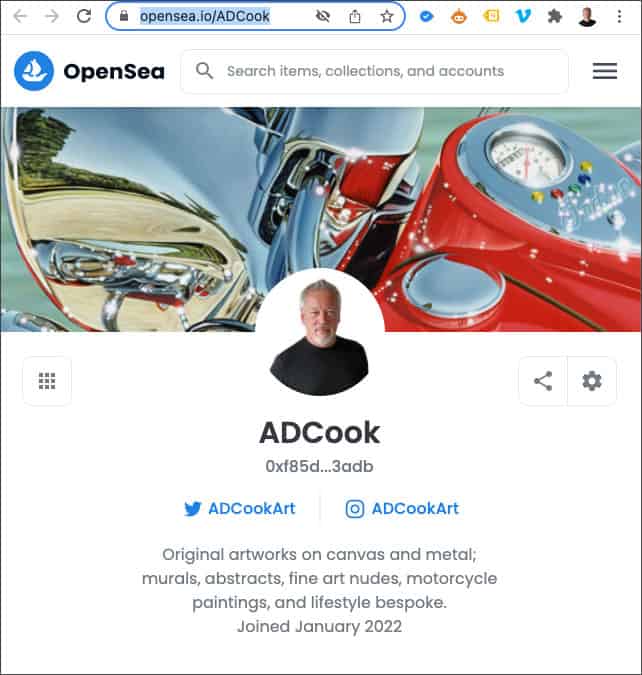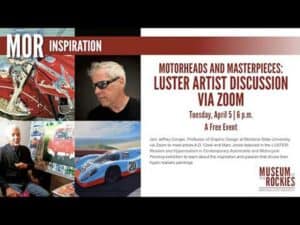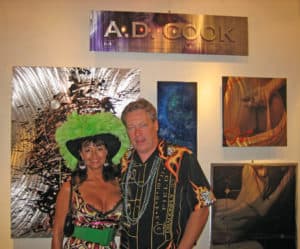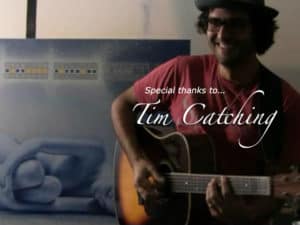
There Has Been a Lot of Talk About NFTs Lately, Especially Art NFTs
Lately, almost everywhere I go, I am often asked if my art is available as NFTs.
At first, I have to admit, I had little idea of what they were talking about. This whole “NFT thing” came out of nowhere fast and now it’s all the chatter in the art world. And I, for one, find it fascinating!
What are NFTs?
First things first, NFT stands for Non-Fungible Token.
The difference between “fungible” and “non-fungible” is everything. If something is fungible, it has a standard value, like a dollar is a dollar is a dollar. You can trade it for another paper dollar or four quarters or any pocket change combination or variation, but it is still a dollar — one buckeroo, eight bits, that’s it. The only thing that might change its value would be if the dollar bill were a collectible, in which case it would be non-fungible.
Most things in life are fungible. It’s a good thing, too, because it keeps things simple and easy for most of our day-to-day existence. It works for something where there are millions and billions of the same product mass-produced across the globe daily, like a McDonald’s cheeseburger, for example, one dollar.
 Original Artworks are a perfect example of something NON-fungible. Since an original artwork is a one-of-a-kind creation, there is only one; it has a divinely unique value. After all, there is only one Mona Lisa, and she is worth whatever someone will pay to have her. She is non-fungible.
Original Artworks are a perfect example of something NON-fungible. Since an original artwork is a one-of-a-kind creation, there is only one; it has a divinely unique value. After all, there is only one Mona Lisa, and she is worth whatever someone will pay to have her. She is non-fungible.
Non-Fungible Tokens are similar to art in that regard. When an NFT of an artwork is created, it is also a one-of-one creation—made digitally and forever tracked in the digital universe for its provenance, ownership, and value. That, along with about a million other reasons, is why NFTs are the new big thing in the art world. Over the centuries, unscrupulous painters have attempted to copy the beautiful Mona, and some have even succeeded in passing theirs off as authentic, but that can’t happen with NFTs. They are among the most verified unique of all.
NFTs are designed to give you something that can’t be copied: ownership of the work (though the artist can still retain the copyright and reproduction rights, just like physical artwork). To put it in terms of physical art collecting: anyone can buy a da Vinci print, but only one person can own the Mona Lisa.
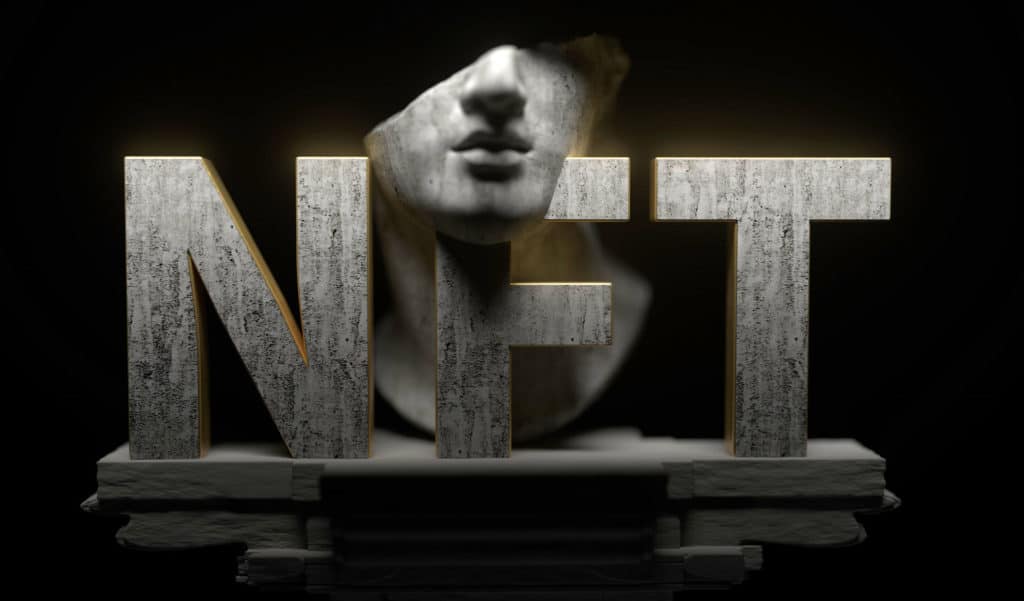
How NFTs Work
NFTs are tokens that we can use to represent ownership of unique items. They let us tokenise things like art, collectibles, even real estate. They can only have one official owner at a time and they’re secured by the Ethereum blockchain – no one can modify the record of ownership or copy/paste a new NFT into existence.
NFT stands for non-fungible token. Non-fungible is an economic term that you could use to describe things like your furniture, a song file, or your computer. These things are not interchangeable for other items because they have unique properties.
Fungible items, on the other hand, can be exchanged because their value defines them rather than their unique properties. For example, ETH or dollars are fungible because 1 ETH / $1 USD is exchangeable for another 1 ETH / $1 USD.
source: https://ethereum.org/en/nft/#what-are-nfts
At a very high level, most NFTs are part of the Ethereum blockchain. Ethereum is a cryptocurrency, like Bitcoin or Dogecoin, and its blockchain also supports NFTs, which store extra information that makes them work.
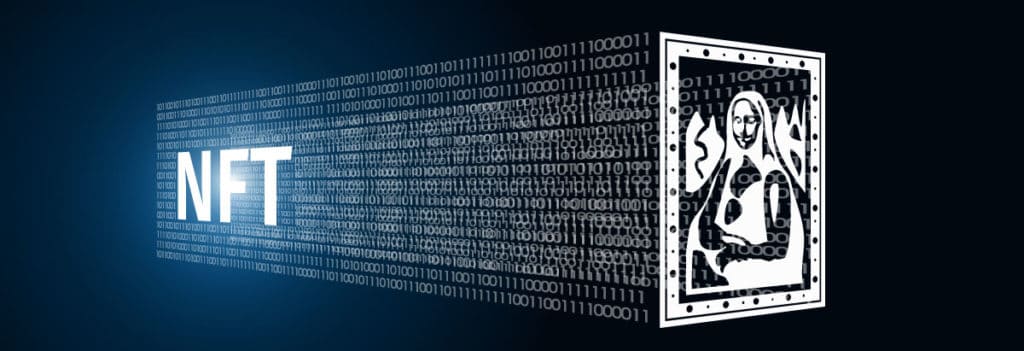
NFTs are different from ERC-20 tokens, such as DAI or LINK, in that each individual token is completely unique and is not divisible. NFTs give the ability to assign or claim ownership of any unique piece of digital data, trackable by using Ethereum’s blockchain as a public ledger. An NFT is minted from digital objects as a representation of digital or non-digital assets.
For example, an NFT could represent:
DIGITAL ART
-
- GIFs
- Collectibles
- Music
- Videos
REAL-WORLD ITEMS
-
- Deeds to a car
- Tickets to a real-world event
- Tokenized invoices
- Legal documents
- Signatures
Why Collectors Love NFTs
Collectors love NFTs because they are digitally unique, no two NFTs are the same. Every NFT must have an owner and this is of public record and easy for anyone to verify, which means you can easily prove you own it. You can sell it, or, you can hold it forever, resting comfortably knowing your asset is secured by your digital wallet.
An NFT can only have one owner at a time. Ownership is managed through the uniqueID and metadata that no other token can replicate. NFTs are minted through smart contracts that assign ownership and manage the transferability of the NFT’s. When someone creates or mints an NFT, they execute code stored in smart contracts that conform to different standards, such as ERC-721. This information is added to the blockchain where the NFT is being managed.
DISCLAIMER: I am neither a lawyer nor an investment counselor. This information is shared for knowledge and awareness of emerging technologies and opportunities only. I have no affiliation or connection with Crypto.com or Ethereum at the time of this writing. Please do your homework before making any investment decisions.
Learn More About Art NFTs
Did this post help?
Support my efforts to bring you more great content.
Thank You!
- About the Author
- Latest Posts
- More info
A.D. is an artist who started drawing at a young age. Throughout his life, he has worked with different creative tools in traditional and digital art and design. His art and writings have been showcased in various publications such as Airbrush Action Magazine, Airbrush Magazine, American Art Collector, Art & Beyond, Dream To Launch, Easyriders, Las Vegas City Life, Las Vegas Weekly, L’Vegue, ModelsMania, Quick Throttle, and The Ultimate Airbrush Handbook.

